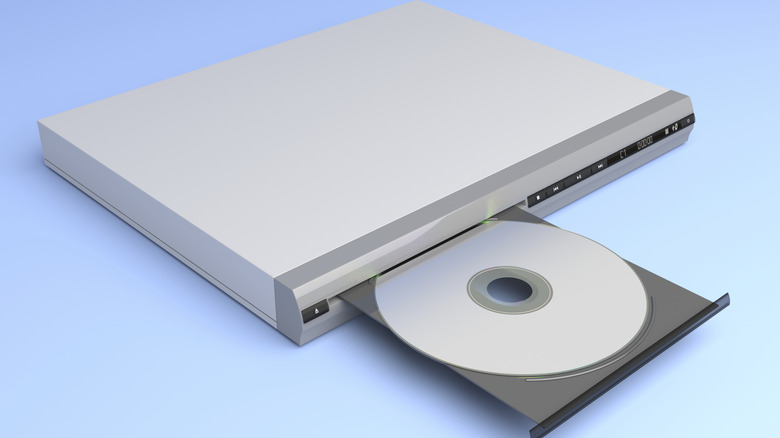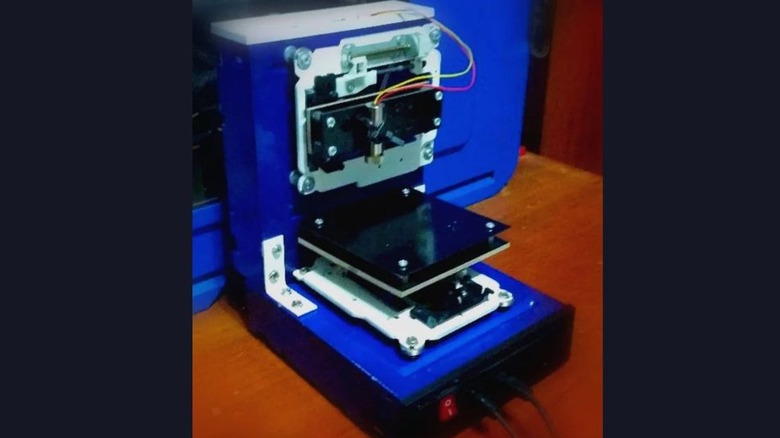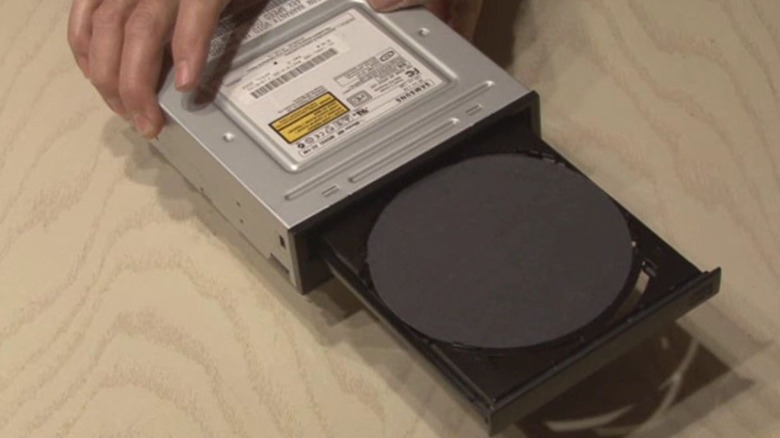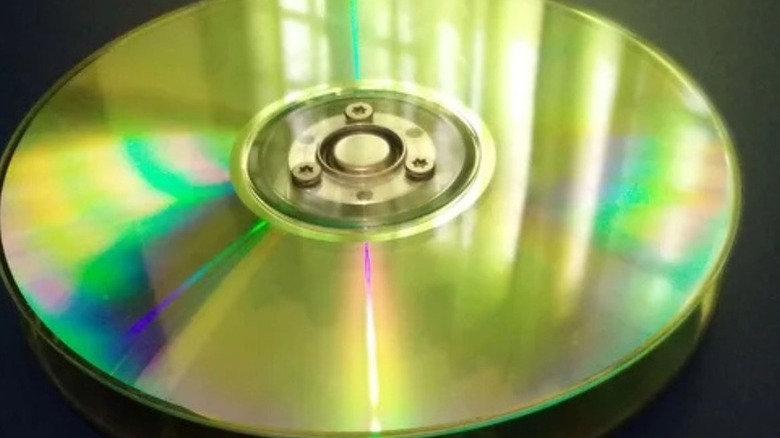5 Ways To Repurpose Old CD And DVD Players
You might think that CD players and DVD players have had their run, but as it turns out, they are absolute goldmines for DIY projects. Pop one open and you'll find stepper motors, laser assemblies, DAC chips, power circuits, infrared receivers, and precision mechanical parts — components that are still perfectly good even if the device itself is toast.
These parts were built to withstand thousands of hours of spinning discs, reading data, and converting signals, so they're not flimsy. They're reliable, over-engineered in the best way, and surprisingly versatile across hobby electronics, robotics, audio mods, or custom control systems.
If you have one of these collecting dust in a closet or you are about to throw it out, you may want to hold off. Instead of contributing to electronic waste, you can actually turn these into something useful. Here are five interesting ways you can breathe life back into that old CD or DVD player of yours.
Build a laser engraver
Ever cracked open an old DVD writer? Inside, you'll find a laser diode, sled mechanism, and stepper motor, which coincidentally happen to be everything you need to build a pocket-sized laser engraver. This Argentine maker named Aoshido figured out how to turn multiple DVD drives into a working engraver. He mounted the sled assemblies from two drives in an XY configuration — one handling horizontal movement, the other vertical. An Arduino running GRBL firmware controlled the steppers, while the laser diode did the actual engraving.
If you want to try building one yourself, you'll need at least two DVD drives, an EasyDriver stepper shield, an Arduino Uno, a laser current driver circuit, and GRBL firmware plus control software. The process involves disassembling the drives to extract their sled assemblies, mounting them perpendicular to each other on a frame, wiring the stepper motors to the driver board, and connecting the laser diode with proper current limiting. What you end up with is an awesome laser engraver made entirely from old electronics that would otherwise end up in the trash.
Make a CNC plotter or a robotic arm
Those same stepper motors work great for light robotics and pen plotters, too. One Instructables user built what they called an "Arduino-Based CNC Plotter" using three salvaged CD drives, an Arduino Uno, EasyDriver stepper motor modules, and some basic mounting hardware. The build works by positioning two drives to handle horizontal and vertical movement, while the third one moves the pen up and down. You're limited to whatever travel the DVD sleds give you (usually around 30-40mm in each direction), but that's plenty of space for small drawings, labels, or even simple PCB layouts.
Drive steppers are usually 20-step motors, which gives you decent precision for this kind of work. Each motor gets connected to an EasyDriver board that takes the digital signals from your Arduino and turns them into the right current levels to move the stepper. The pen holder just clamps onto one of the sleds, and you can feed it G-code commands like any other CNC machine. Plus, it's a great way to learn how CNC machines work. You're dealing with real stepper motors, figuring out coordinate systems, and writing G-code – all the same steps you'd encounter on a normal CNC router.
Turn the tray into a secret stash
The motorized tray mechanism in DVD drives makes an excellent hidden storage compartment. Here's one way to do it: pull apart an old drive, keep the tray motor, and wire it to a hidden push button switch with a USB power adapter. Mount the drive somewhere inconspicuous, maybe under your desk or inside a cabinet, and you've got a secret compartment that opens with the press of a button. For even more storage space, you can gut the drive's internal components — the laser assembly, circuit boards, and metal framework — leaving just the outer casing and tray mechanism.
This opens up the full interior volume of the drive, giving you a compartment that's about 5 inches deep and wide enough for documents, cash, USB drives, or other small valuables. The beauty is in the disguise. It looks completely normal sitting on a shelf or mounted under a desk, but a quick press of your hidden switch opens up a storage space that most people would never think to look for. You can even leave the original front bezel intact so it looks like a regular, non-functional old drive.
Turn it into a Raspberry Pi-powered media center
If your CD player is dead but the case is still good, it makes a perfect shell for a Raspberry Pi media center. The internal space usually fits a Pi 4 or Pi 3B+ with room left over for a small cooling fan and maybe even a portable SSD for storage. You're going to have to remove all the old electrical parts, save the front button panel and IR receiver. That way, you can wire them up to control power, volume, or assign shortcuts. Then just run a micro-HDMI cable out through the old video ports, install Plex or Kodi, and your dead player is now streaming Netflix and YouTube.
Want to make it look cooler? Throw some LED strips inside or wire up a small OLED screen on the front to display what's currently playing. It makes it look way more interesting than just having a Pi board sitting around. The big advantage is that you're working with a proper metal case that already has ventilation holes, mounting points, and a power button that doesn't look like it came off a circuit board.
Turn your DVD tray into a motorized Lazy Susan
The DVD tray also works as a rotating platform once you strip it down. That tray motor already has a gearbox that keeps things moving smoothly at low speeds. People have turned these into all sorts of rotating displays: Product photography setups where you need smooth 360° shots, Lazy Susans for spice racks, and little stands for showing off collectibles. The motor setup is already there, so you just need to wire in a toggle switch or speed controller to control it.
Getting it working is straightforward — wire in a toggle switch for on/off control, or add a speed controller if you want variable rotation. Some people connect them to an Arduino for programmed movement, like rotating a few degrees every few seconds for a display case. The tray works as your base. Just glue a circular piece of acrylic or wood on top, and you've got a smooth rotating platform.
Since DVD players had to spin discs smoothly at thousands of RPM, the whole mechanism is already set up to handle the rotating weight properly. From there, you can customize it however you want: LED strips around the base for accent lighting, a nice wooden enclosure, or even use it as a motorized incense holder. The main advantage is that you're starting with a motor and gear system that already works instead of trying to build one from scratch.





